This post is sponsored by Pine Brand mung bean starch and tapioca starch.
If you love bubble tea, you are going to love this too. "Lod chong Singapore" is made from chewy tapioca noodles in refreshing iced coconut milk and coconut water flavoured with pandan leaves! Similar to cendol, this is a popular dessert in Thailand, especially in open air markets as a sweet cold treat while you peruse. It's vegan, gluten free, and easy to make; much more so than homemade bubble tea!
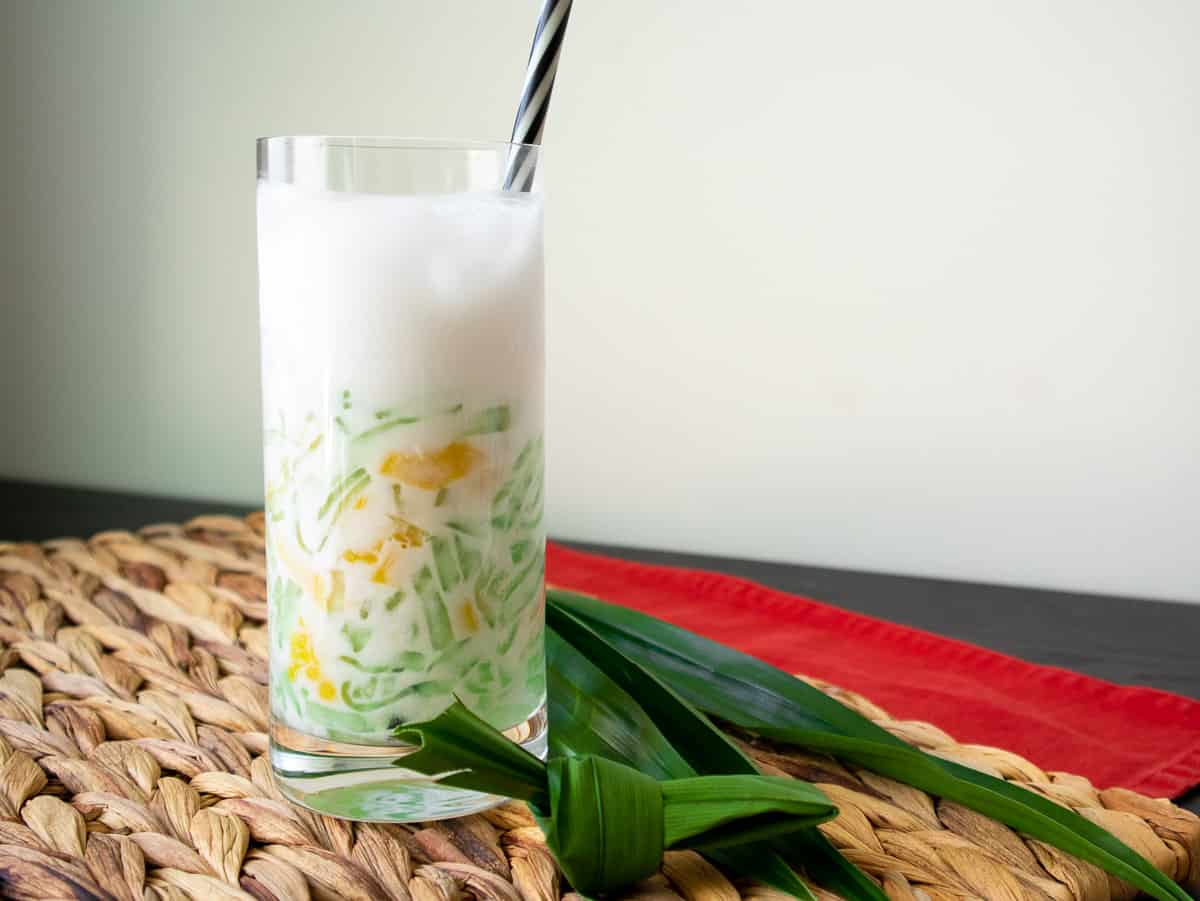
Want to save this recipe?
Why is it called Lodchong Singapore?
Lod chong is our term for cendol, the green dessert noodles popular all over Southeast Asia that are pressed and extruded rather than rolled and cut like these. For a long time I thought that this was the Singaporean version of cendol; but turns out, the reason for "Singapore" in the name is because the shop that popularized it was situated in front of a movie theatre called "Singapore Theatre." So, no relation to Singapore the country here! (*I believe they not only popularized but actually invented the dessert, though I am not 100% sure on this.)
What You'll Need
Here are the ingredients you'll need to make lod chong Singapore:
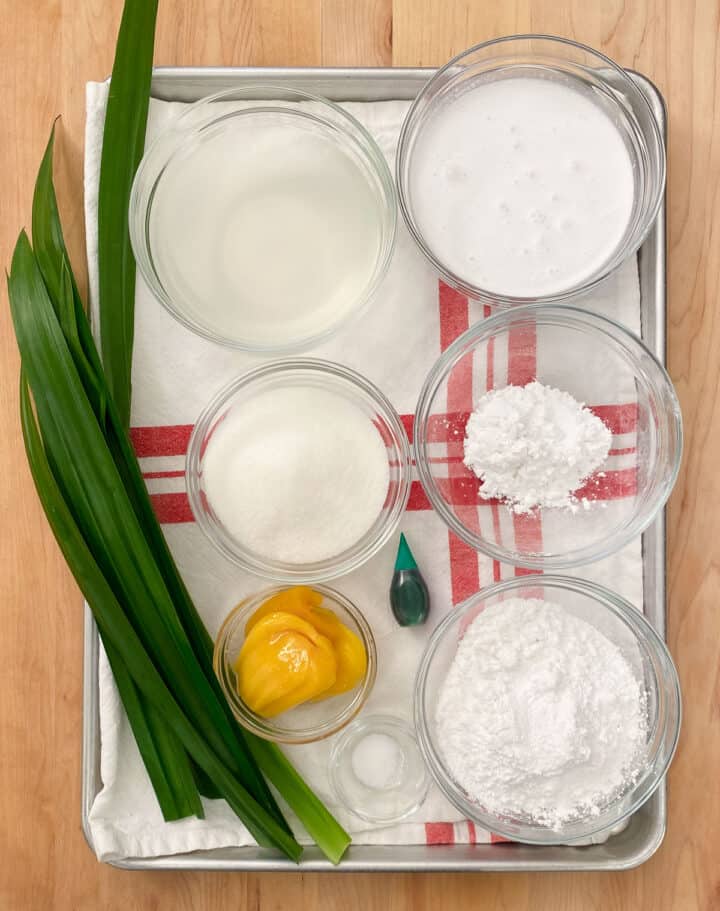
Step-By-Step: How to Make Lod Chong Singapore
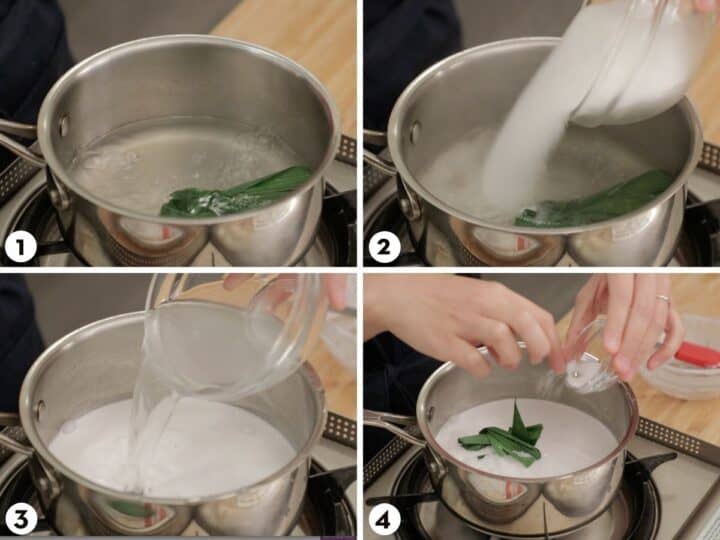
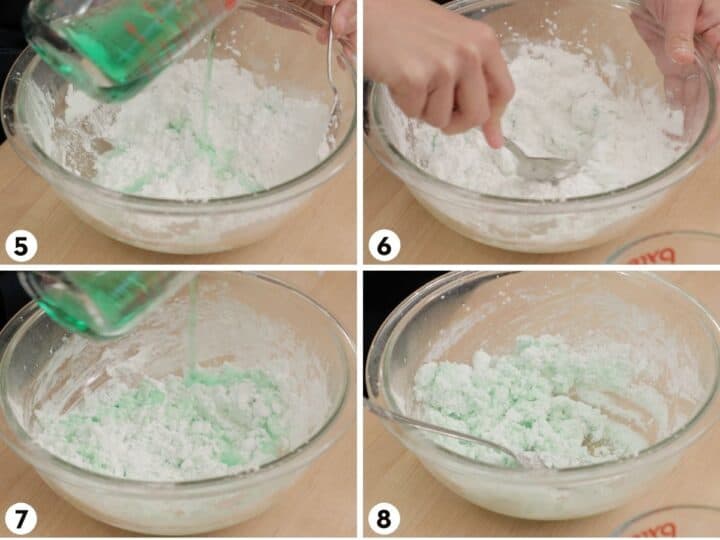
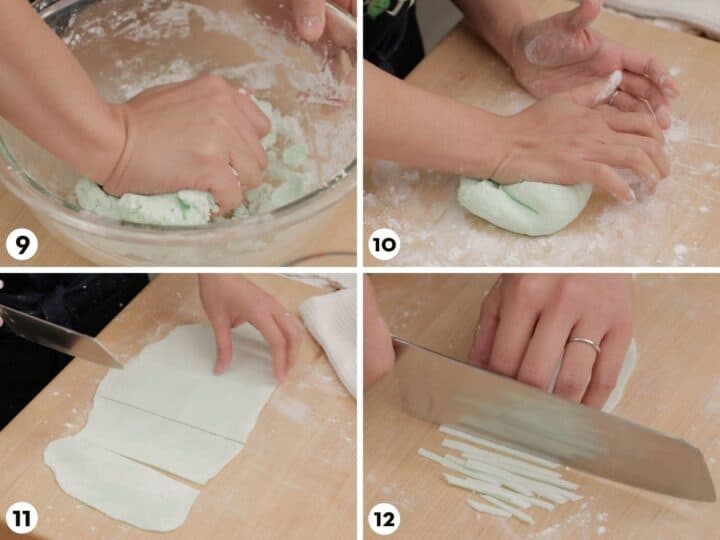
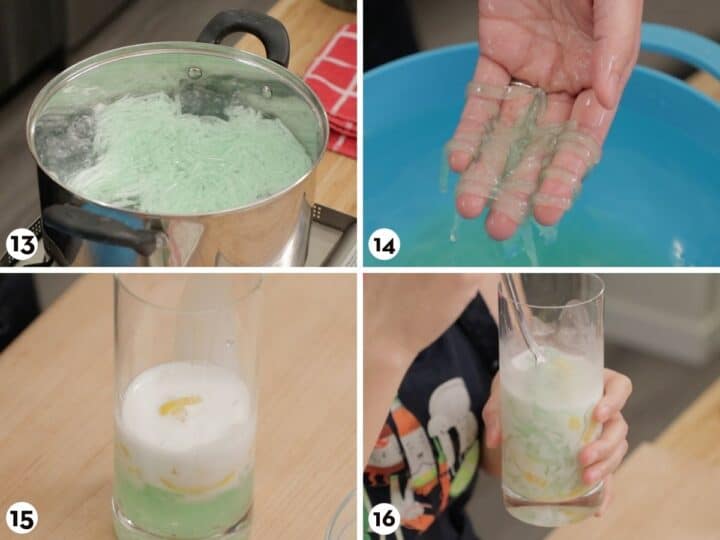
Some FAQs about ingredients
If you cannot find mung bean starch, you can leave it out and substitute more tapioca starch.
No. Mung bean flour is basically ground up mung beans, and has a light yellow tint and a coarser texture. Mung bean starch contains only the starch extracted from the beans, and should be white and fine like cornstarch. They cannot be used interchangeably. This is the Pine Brand mung bean starch that I use.
Maybe. Some brands use the term "tapioca flour" to refer to the tapioca starch used in this recipe. However, even though tapioca is made from cassava, products called "cassava flour" are NOT what you want for this, as they are not the refined starch you need. To be sure, look for tapioca starch from Thailand - it should be white and fine like cornstarch.
Frozen pandan leaves are perfectly fine to use and are available at large Asian markets that carry lots of Southeast Asian ingredients. You can also use pandan extracts, but add a little bit at a time as it can become too strong. Or for a different-but-good alternative, try adding few drops of orange blossom water to the syrup and coconut milk.
Absolutely not. Good coconut water has a higher percentage of young coconut water in it (as opposed to mature coconut water) which makes it sweeter and more fragrant. I prefer UFC and Chaokoh brands which are both from Thailand. Avoid ones with added sugar or flavouring.
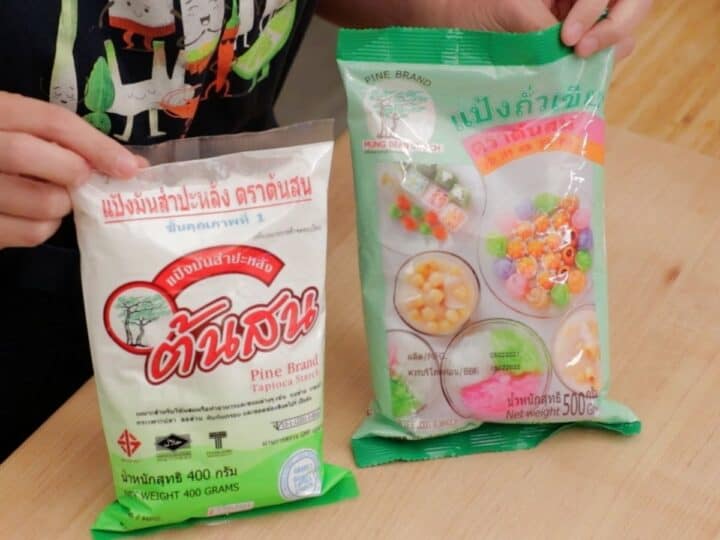
Advance Prep & Storage
This part is a bit tricky because the noodles don't keep well. I've detailed how to store each component below, but here is my general "best practice": Make the syrup and coconut milk in advance. Make the dough the day-of, and don't refrigerate. Roll out and cook the noodles within a few hours of serving. Do not freeze anything.
Syrup & Coconut Milk. Make the syrup and the coconut milk well in advance to allow enough time for them to cool before using. The syrup will last indefinitely in the fridge, and the coconut milk at least a week.
The Dough. Unfortunately the dough does not keep well. In the fridge the starch will stiffen and become brittle, making it hard to work with. You can, however, make the dough up to 4 hours in advance, keep it tightly wrapped at room temperature until you're ready to roll (pun totally intended!).
The Uncooked Noodles. Once the noodles are cut, you should cook them as soon as possible. Left out they will dry and become brittle and break; and they might also stick together, especially if you have them sitting on top of each other in a big pile. But if you need to leave them for a bit, keep them covered with plastic wrap.
Cooked Noodles. Once the noodles are cooked, the clock starts ticking! It's a little tricky, but here are a few things to keep in mind:
- Once you drain the noodles, serve or assemble the dessert right away or they will start to clump together.
- If not serving right away, assemble the dessert with the jackfruit, syrup and coconut milk, but add ice only when ready to serve. The liquid will prevent the noodles from clumping, and even though they will slowly swell up, they will still be good for a few hours.
- Do not refrigerate the cooked noodles or the texture will harden and lose that soft chew.
Tips for Optimal Deliciousness
Once you've cooked the noodles, even if you're ready to eat, hold off for a bit. Assemble and let the noodles sit in the syrup and coconut milk "broth" for about 15 minutes. The texture will still be perfect, but the noodles will have had time to absorb some sweetness from the syrup and taste better. Again, the noodles will be good for a few hours in the broth, but they will continue to swell and become less chewy as time goes by. Do not refrigerate to maintain the best noodle texture.
When ready to eat, add lots of ice and stir really well to allow everything to completely chill and to dilute the coconut milk; the resulting liquid should be light enough to drink.
You might also like...
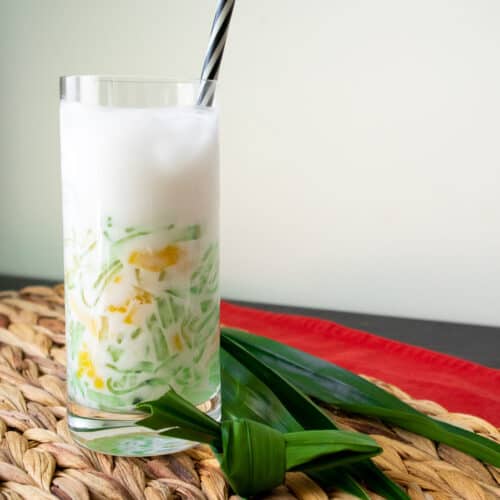
Bubble Tea Noodles in Coconut Milk (Lod Chong Singapore / Cendol)
Equipment
- Rolling Pin
Ingredients
Lod Chong Noodles:
- 4.2 oz Pine Brand tapioca starch plus extra for dusting, about 1 cup
- 0.9 oz Pine Brand mung bean starch, about 3 Tbsp
- ⅔ cup water
- 5 drops green food colouring
Pandan Syrup:
- 1 ¼ cup coconut water or water
- ¾ cup sugar, (see note)
- 1 pandan leaf
Coconut Milk:
- 1 cup coconut milk
- ½ cup coconut water
- ⅛ teaspoon table salt
- 1 pandan leaf
For serving:
- 5 pieces sweet jackfruit, fresh or canned, julienned against the grain (see note)
- Lots of ice
Want to save this recipe?
Notes
- If using water for the syrup instead of coconut water, use 1 cup of sugar.
- Canned jackfruit has more persistent fibers, so it's best to cut against the direction of the fibers. If using fresh jackfruit, you can cut it in any direction.
FULL VIDEO TUTORIAL
All my recipes come with step-by-step video tutorials with extra tips not mentioned in the blog post, so make sure you watch the video to ensure success. If you enjoy them, consider subscribing to the YouTube Channel to not miss an episode. Thank you!
Subscribe to my YouTube ChannelInstructions
Make the syrup:
- Add coconut water or water into a small pot. Tie the pandan leaf into a knot or two until it’s short enough to fit nicely into the pot and add it to the coconut water. Cover and simmer on low heat for 5 minutes to infuse.
- Add the sugar and stir until dissolved. Cool completely.
Make the coconut milk:
- Combine coconut milk, coconut water, and salt in a small pot. Tie the pandan leaf into a knot or two until it’s short enough to fit nicely into the pot and add it to the coconut milk. Cover and simmer on low heat for 5 minutes to infuse. Cool completely.
Make the noodles (please watch the video for technique!):
- Whisk the starches together in a large, heat-proof mixing bowl.
- Bring the water to a full boil, and once boiling, turn off the heat immediately (I do this in the microwave in a glass measuring cup). Add the food colouring and stir to mix.
- Working with the water right away while it's still hot, drizzle roughly 3 tablespoons of the hot water over the flour, then quickly toss with a spoon to distribute the hot water. The parts where the flour touches the water will clump up immediately. Repeat with more hot water, again 3 tablespoons at a time, until all of the flour starts to look clumpy. You should use MOST of the hot water, but you may not need all of it.
- Use your hand to squeeze the flour into a ball. It should be very rough but it should come together easily. If there is still dry flour, add a little more water. If it is too wet and sticks to your hand too much, you can add a little more tapioca starch, 1 tablespoon at a time.
- Once a rough dough forms, transfer it onto a clean work surface dusted with tapioca starch. Dust the top of the dough lightly with more starch and then knead until a smooth dough forms, adding more starch if the dough sticks to your hands. If there are little lumps of flour in the dough, do not worry, this will all cook away.
- Separate dough into 2 pieces, and cover one with a tea towel while you work with the other. Re-dust the work surface and roll the dough out into a rectangle about 2mm thick (1/16 inch). Don’t worry too much about the dimensions.
- Once you have the right thickness, cut down the sheet so you have long strips that are 2-3 inches wide. Then generously dust the strips and cut them into noodles, about 3-4 mm wide.
- Toss the cut noodles with a little extra tapioca starch to ensure that they do not stick together. Repeat with the remaining dough.
- Bring a large pot of water to a full rolling boil, and meanwhile prepare a large bowl of very cold water. Once the water is boiling, “sprinkle” all of the noodles into the pot. Once the noodles float, keep them boiling for another 1-2 minutes or until cooked through.
- To check doneness, put a piece of noodle into the cold water; it should be translucent all the way through and it should be nice and chewy with no starchiness left in the centre. If you find it too chewy, you can cook it a bit longer.
- Once done, scoop the noodles out with a wire skimmer and put them immediately into the cold water. Once cool, drain them immediately and place them into a bowl. Do not let them linger in the water unnecessarily or they will swell up.
If serving right away:
- Divide the noodles into a serving bowl or cup, add jackfruit, then add syrup to your liking (start with 2 tablespoon per serving), and about 4 tablespoon of the coconut milk. If possible, let it sit for 15 mins or so and the noodles will absorb some of the sweetness and will taste better overall. Add a lot of ice and stir well, allowing it to really chill before you eat. Eat with a big bubble tea straw or a spoon. Put out extra syrup for people to add more if desired.
If not serving right away:
- Once the noodles are cooked, you need to keep them in liquid or they will eventually stick together into a big clump. So place the noodles into a large bowl, add the jackfruit and pour all of the coconut milk over them. Add the syrup to taste, but make it a little sweeter than you like because the ice will dilute it some. Stir to mix and keep at room temp until ready to serve, ideally no longer than 2 hours. The longer they sit the more they will swell up with liquid and the texture will be less chewy.
- When ready to serve, portion the noodles out into bowls or cups and add a lot of ice and stir well, allowing it to really chill before you eat. Eat with a big bubble tea straw or a spoon. Put out extra syrup for people to add more if desired.For advance prep and storage: please see post above for details!

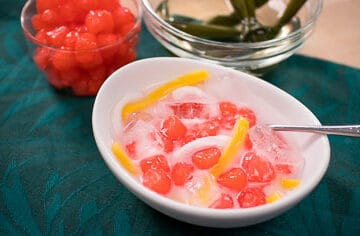
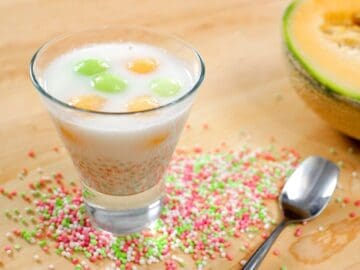
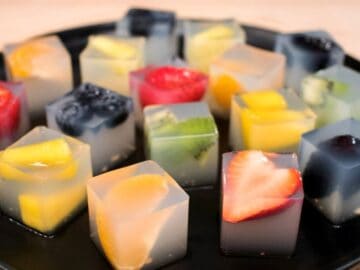
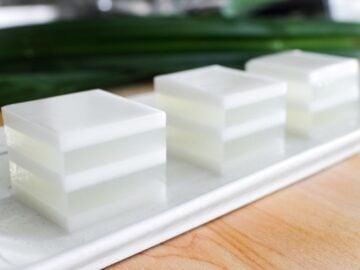
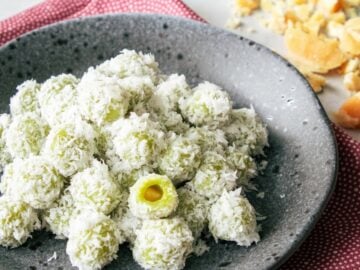
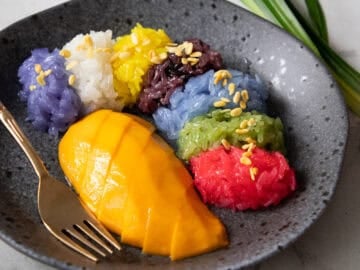

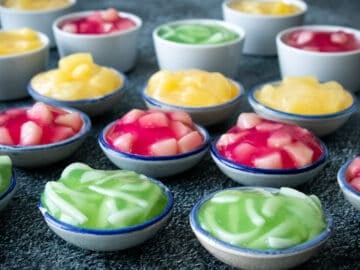
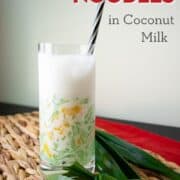
Patricia says
Once I added the ice into the coconut milk in the end, the fat of the coconut milk started to harden again. What can I do to prevent this?
Pailin Chongchitnant says
Sounds like the fat in your coconut milk had separated. Try it again and make sure the coconut milk is well emulsified?
Han says
I just ordered a bunch of the Pine brand starches. Thanks for the heads up. I never knew that brand existed, and I had tried to use the bean flours earlier -- not good.